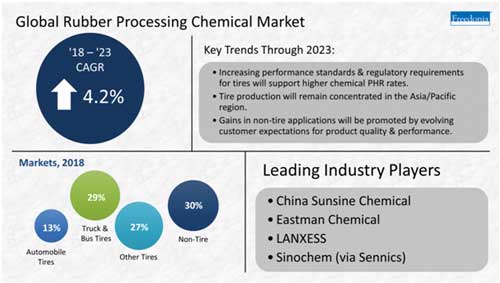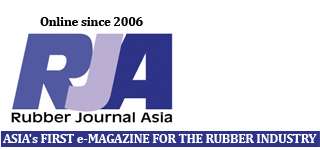The rising standards for tyre lifespans and the popularity of tyres for use in a wide range of conditions will support a steady increase in antidegradant parts-per-hundred-rubber (PHR) rates, and subsequently the global volume demand for rubber processing chemicals, which will expand at 4.2% per year through 2023. Antidegradants are used intensively on tyres to allow them to function properly in harsh conditions.

While tyre production will remain concentrated in the Asia Pacific region, a growing market share for premium tyres with more specialised formulations, which generally requires greater chemical loadings, in the US and Western Europe will result as tyre manufacturers maximise all aspects of the “magic triangle” of a tyre – good fuel economy, tread life, and wet traction – rather than accepting deficits in one area to benefit another.
Heavy use of antidegradants in truck/bus tyres, including those based on phenylenediamine chemistries, which offer good resistance to oxidation, ozone degradation, heat, and flex, is expected to bolster global demand; as will higher loadings of antidegradants in the tyre sidewall and tread compounds to impede the aging process and improve performance.
In addition to higher quality tyres with longer expected service lives, increasing motor vehicle ownership rates and expanding motor vehicle production in low- to middle-income regions, such as Central and South America and Eastern Europe, will continue to represent significant demand for rubber processing chemicals in this time.
The highlights are part of a “Global Rubber Processing Chemicals” analysis study by The Freedonia Group, an international industrial research company, with forecasts for 2023 and 2028. Demand for these chemicals includes only select quantities used in rubber processing over six major geographic regions and 21 individual nations. The study underlines market shares, competitive strategies, corporate activity, and product mix as well.
